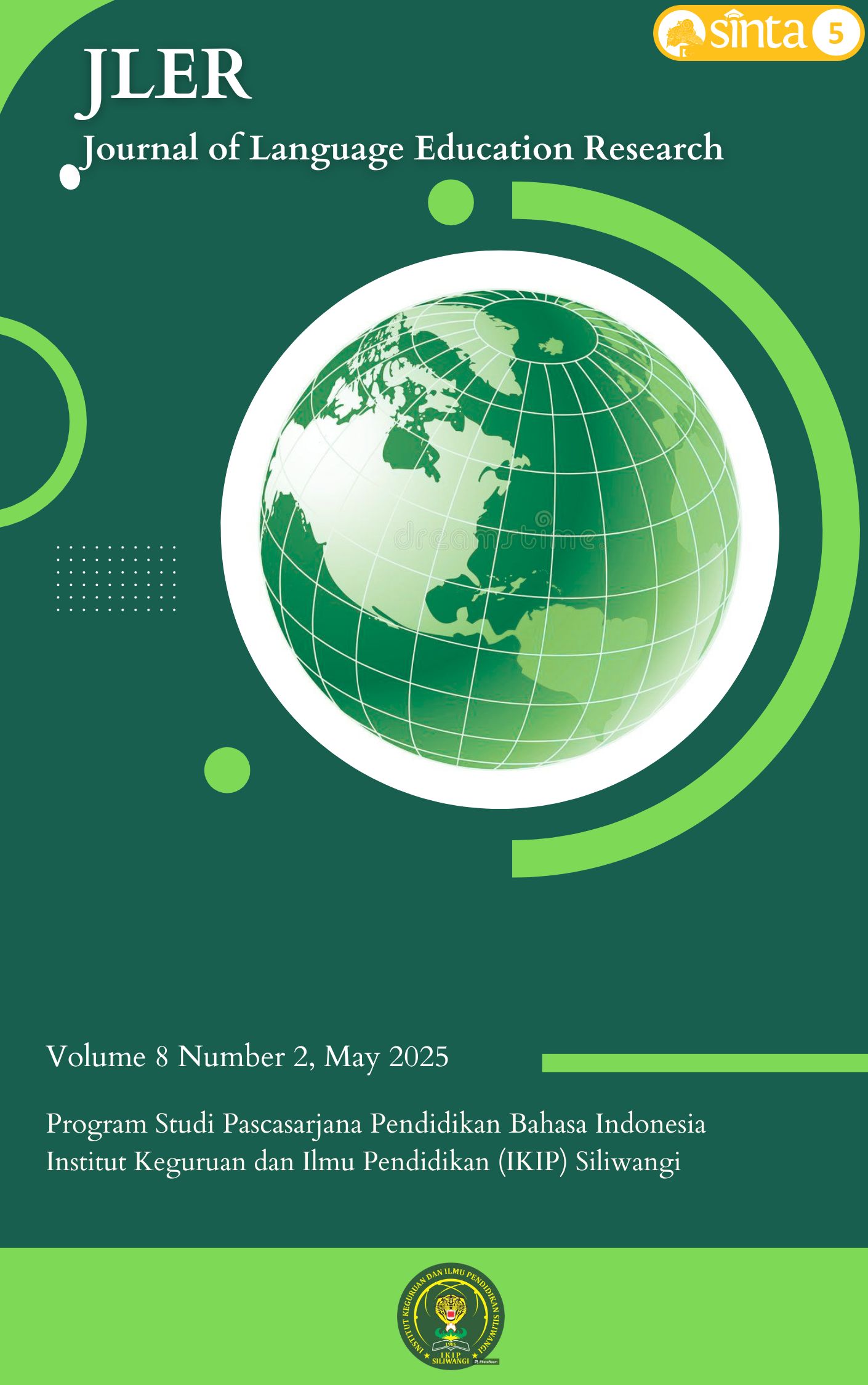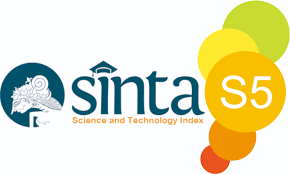The Effect of Scramble Learning Model on Student Learning Outcomes
DOI:
https://doi.org/10.22460/jler.v8i2.25637Kata Kunci:
Scrumble , Learning Outcomes, StudentsAbstrak
The issue of inferior learning results resulting from the learning process's propensity to employ less creative learning models serves as the backdrop for this study. This study aims to identify the effect of the scrumble learning model on learning outcomes. This research method uses literature reviews from 3 databases, namely Google Scholar, Garuda Portal, and ERIC using the keywords "Scramble Model", "Learning Outcomes",. The inclusion criteria are articles published in 2019-2023, free full text, there is a publisher name, volume and issue and are included in the experimental design. The results of this literature review found 8 articles discussing the impact of instructional approaches on the learning outcomes of student. All articles show that the scrumble method can improve student learning outcomes as evidenced by the increase in post-test scores from pre-test scores. The study's findings suggest that using the scramble learning paradigm can encourage student collaboration and produce a positive learning environment so that teachers can apply the scramble learning model to enhance the academic performance of students
Referensi
Afridawanti, A. (2018). Improve Student Effectiveness And Efficiency In Reading With Ability Using Scramble Technique At Sd Negeri 08 Pasar Surantih. Scholastic Journal of Education, 2(2), 20-27. https://doi.org/10.36057/jips.v2i2.263
Antoko, Y. (2021). Efforts to Improve Learning Outcomes on Telling Indonesian History through the Application of Word Square and Scramble Learning Methods. Journal on Education, 4(1), 25-37. https://doi.org/10.31004/joe.v4i1.407
Apriyanti, N. E. (2019). The Effectiveness of Scramble Model on Student Learning Outcomes in Science Learning. Indonesian Journal of Educational Research and Review, 2(2), 149. https://doi.org/10.23887/ijerr.v2i2.17336
Artiningsih, S., Riyanto, Y., & -, H. (2019). Influence of Learning Model Type Cooperative Scramble with Picture Media on Motivation and Student's Learning Outcomes of Social Studies Class 2 SDN 2 Tropodo. International Journal of Scientific and Research Publications (IJSRP), 9(7), p9174. https://doi.org/10.29322/ijsrp.9.07.2019.p9174
Gunawan, D. (2019). Developing Scramble-Based Learning Method to Increase Students' Reading and Writing Comprehension. Journal of Teaching and Learning in Elementary Education (Jtlee), 2(1), 16. https://doi.org/10.33578/jtlee.v2i1.6643
Harahap, T. H., & Rahman, A. A. (2022). The Effectiveness of Scramble Model to Improve Elementary Students' Activeness and Learning Outcomes. Journal on Education, 05(01), 1343-1355.
Hikmah, D., Hadi, W. P., Sidik, R. F., Qamaria, N., & Yasir, M. (2020). Application of Scramble Learning Model to Students' Cognitive Learning Outcomes. Journal of Natural Science Educational Research, 8(2), 249-256.
Himawati, A. (2009). Application of Scramble Type Cooperative Learning Model in Learning Pantun Writing Skills for Elementary School Students. pp. 1-7.
Juwariah, J. (2019). The Effect of Learning Methods and Student Motivation on Indonesian Language Learning Outcomes. Discourse: Journal of Indonesian Language Education, 1(02), 165. https://doi.org/10.30998/diskursus.v1i02.5292
Mahmud, H. (2020). the Effectiveness of the Use of Scramble Method in Class Iv Ips Learning Sdn 1 Bulango Selatan Bone Bolango District. Website: Ijiert.Org, 7(12), 167-173.
Monawati, M., Syafrina, A., Yamin, M., & ... (2021). The Influence of Scramble Cooperative Model on Fourth Grader Students' Learning Achievement on Whole Number Calculation. ProceedingsofAICS ..., 342-348. http://www.jurnal.unsyiah.ac.id/AICS- Social/article/view/24371%0Ahttp://www.jurnal.unsyiah.ac.id/AICS- Social/article/download/24371/15301
Nahdi, K., & Yunitasari, D. (2019). Preschool Indonesian Language Literacy: A Proposal for the Handsome Dia Method in Beginning Reading. Journal of Obsession: Journal of Early Childhood Education, 4(1), 446. https://doi.org/10.31004/obsesi.v4i1.372
Novita Sari, D. (2018). The Effect of Scramble Learning Model Assisted by Crossword Fuzle Game on Science Knowledge Competency. Journal of Educational Research and Development, 2(1), 68-74. https://doi.org/10.23887/jppp.v2i1.15340
Nurhayati, E. (2022). Strengthening Teacher Literacy through the Development of a Moodle-assisted Blended Learning Model. 11(2), pp. 271-285. doi:10.22460/semantik.v11i2.p271-285
Nurhayati, E. (2022). STEM Approach in Online Learning of Creative Writing Literature in the Covid-19 Era. 34(2), pp. 282-295.
Nurhasanah, A. E. (2020). Meta-analysis of the Effect of Scramble Type Cooperative Learning Model on Student Learning Outcomes in Elementary School. Primary: Journal of Primary School Teacher Education, 9(5), 607-615. h ttps://doi.org/10.33578/jpfkip.v9i5.8007
Patmawati, D., Ws, R., & Halimah, M. (2018). The Effect of Audio Visual Media on Student Learning Outcomes on the Material of Types of Work in Elementary Schools. PEDADIDAKTIKA: A SCIENTIFIC JOURNAL OF ELEMENTARY SCHOOL TEACHER EDUCATION, 5(2), 308-316. http://ejournal.upi.edu/index.php/pedadidaktika/index
Purnomo, E. (2021). The Influence of the Scramble Learning Model on the Mathematics Learning Outcomes of Class VIII SMPN 2 Bungku Timur Morowali District. International Conference on Educational Studies in ..., 611(ICoESM), 154-160. https://www.atlantis- press.com/proceedings/icoesm-21/125965630%0Ahttps://www.atlantis- press.com/article/125965630.pdf
Putri, T. A., Safiah, I., & Syafrina, A. (2022). The Effect of Scramble Model on Students' Learning Outcomes on Theme 9 Objects. Student Scientific Journal: Elementary Education Research August Year, 7 (3), 74-81. http://www.jim.unsyiah.ac.id/pgsd/index
Resnani, R. (2021). Improving Students' Pantun Writing Ability through Multiliteracy Model. 14(1), pp. 62-69. doi:10.33369/pgsd.14.1.62-69
Rijal Fadli, M., & Sopacua, J. (2023). The Influence of Scramble Method to Increase Students' Interest in Learning History. Journal of Innovation in Educational and Cultural Research, 4(1), 19-25. https://doi.org/10.46843/jiecr.v4i1.406
Rosanti, S., Zulkarnain, I., & Rangkuti, L. A. (2022). The Effect of Using Game on Students' Motivation in Learning Vocabulary. Journal of English and English Education, 2(1), 1-8. https://doi.org/10.47467/tarbiatuna.v2i1.886
Sativa, D. Y. (2012). The Use of Card Media to Improve Geography Learning Outcomes of Students of Class XI IPS 1 SMA Kolomno Sleman Yogyakarta. pp. 1-21.
Sari, M., & Asmendri. (2020). Library Research in Science Education Research. Natural Science [Accessed July 11, 2022], 6(1), 41-53.
Sembiring, D., Sukirno, & Dini. (2019). The Effect of Word Square Cooperative Learning Model on Student Learning Outcomes on Theme 8 "The Region Where I Live" at SD Negeri 3 Langsa. Journal of Basic Education Studies, 2(1), 125.
Sukerti, N. K., & Pudjawan, K. (2020). The Positive Effect of Scramble Learning Model Assisted by Picture Cards on Students' Learning Outcomes. International Journal of ..., 4(4), 481- 487.
https://ejournal.undiksha.ac.id/index.php/IJEE/article/view/27216%0Ahttps://ejournal.un diksha.ac.id/index.php/IJEE/article/viewFile/27216/17620
Sumira, D. Z., Deasyanti, D., & Herawati, T. (2018). The Effect of Scramble Method and Reading Interest on Reading Comprehension Ability of Elementary School Students. Indonesian Journal of
Primary Education, 2(1), 62. https://doi.org/10.17509/ijpe.v2i1.11673
Sunarya, A. N., Hendrawan, B., & Saleh, Y. T. (2022). The Effect of Using Scramble Model Assisted by Domino Cards on Students' Reading Comprehension Skills in Grade III Elementary School. Journal of Elementaria Edukasia, 5(2), 207-217. https://doi.org/10.31949/jee.v5i2.4202
Wuryanti, S. (2022). Application of Scramble Learning Techniques to Improve Learning Achievement of Social Studies Subjects for Grade VI Students of MIS At-Taqwa Learning Year 2020/2021. Ainara Journal (Journal of Research and PKM in the Field of Education), 3 (2), 92-97. https://doi.org/10.54371/ainj.v3i2.125








